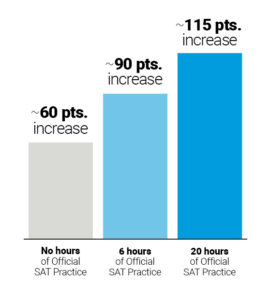This year’s freshmen will benefit from MCSM’s new SAT preparation program, which launched its pilot run last year.
The newest component of a four-year plan to improve overall student performance on standardized tests, this prep program proved even more effective than anticipated. Assistant Principal Michael Salek confirms that during last year’s pilot program there was a 200 point improvement in the average test scores.
The main goal was to provide free in-house SAT prep to MCSM students that might otherwise cost students and their parents thousands of dollars if taken privately. Testing materials were graciously provided by companies like Kaplan at a deep discount due to diligent outreach on the part of key teachers and administrators.
Leading the team of English tutors was Ms. Chiavola, supported by Ms. Manila, Mr. Woodbury, Ms. Manil, and former Kaplan employee, Ms. Taylor.
Leading the Math team was Ms. Espejo, working together with Mr.Woodburn, Ms. Yang, and Ms. Leon.
“What was particularly beneficial,” says Mr. Salek, who developed the implementation and structure of this initiative, “was that our teachers taught our students.”
Participating students were required to stay two days a week after school to work with practice materials. The program began with a baseline exam, followed as the semester progressed by periodic “mock” exams. (This year the program will have a similar structure but will run all year long instead of half the year.) Mr Beresa, who also handles student transcripts and report cards, became the SAT Prep Program Chairman for MCSM.
There are obvious advantages to MCSM developing an in-house SAT prep course. First, there is the convenience of this program taking place in familiar classrooms directly after the school day. Second, students were taught by teachers who had access to each participating student’s academic records. Tutors could see if students were doing their math and English homework, and check their attendance. This enabled them to tailor the tutoring program to specific needs.
Altogether, it was a big time commitment for all concerned. Starting in October, participating students gave up other extra-curricular activities to practice SAT questions for an hour after school. But students also got fractional credit for attending these classes: credit which will count towards their graduation. Guidance counselor Ruth Gerena made parents aware of the benefits of the program, helping to make sure students showed up consistently to take the mock tests.
Classes were intentionally kept small and user-friendly by being limited to 25 teens per room.
Ms. Chiavola (English) and. Ms. Espejo (Mathematics) designed the overall curriculum, guiding the format of group instruction. It took roughly a year to sift through existing PSAT data, the better to plan and prepare tutoring strategies. As the program continues, any flaws in methodology or implementation will be identified and eliminated as more results are produced.
In 2015 the Department of Education decided to make the SAT mandatory for all grade 11 students, which is why MCSM saw an urgent need to improve SAT scores.
Happily, improve they did. An average combined “mock test” score last year was 1135, but many students began scoring in the1480 range. Greater familiarity with mock tests also served to reduce harmful pre-test anxiety in students. Statistics have long shown a measurable uptick in Math and English SAT scores when students are able to practice routine testing formats and protocols.
In short, MCSM’s after school SAT preparatory classes not only serve to reduce students’ fear of this particular college admissions test, but they also alleviate a potential financial burden by providing these training sessions free of charge.
